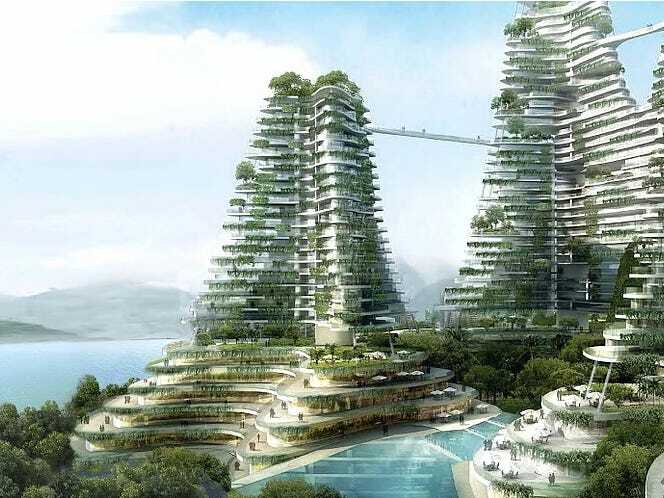Fortified cities have become a science fiction cliché (Peter Jackson even put them on wheels). They are self-sufficient habitats, mega-structures that incorporate all the essential infrastructures: they generate food and energy, manage waste and water.
We have talked about the concept of arcology (a portmanteau term that combines architecture and ecology) in this post. It was coined in 1969 by the architect Paolo soleri, who also worked in Arcosanti, an experimental city in America, to demonstrate his concepts.
What was the vision of Soleri and Arcosanti? A world of “organic” mega structures where people can live and work in harmony.
Popular culture then divided into two strands: the one called “Solarpunk”, which inherits the most holistic and ecological part of arcology, and the most “dystopian/Sci-Fi” one which instead enhances the technological components (and somewhat distorts the basic idea).
Science fiction, then, ends up inspiring reality. Take The Line, for example: a huge smart city that could house nine million people in a single building 500 meters (1650 feet) high, 200 meters (660 feet) wide and a whopping 170 kilometers (105 miles) long. The Line would be powered by solar energy and wind turbines, but from early plans it would not be entirely self-sufficient: residents would still need food and other supplies from external sources.
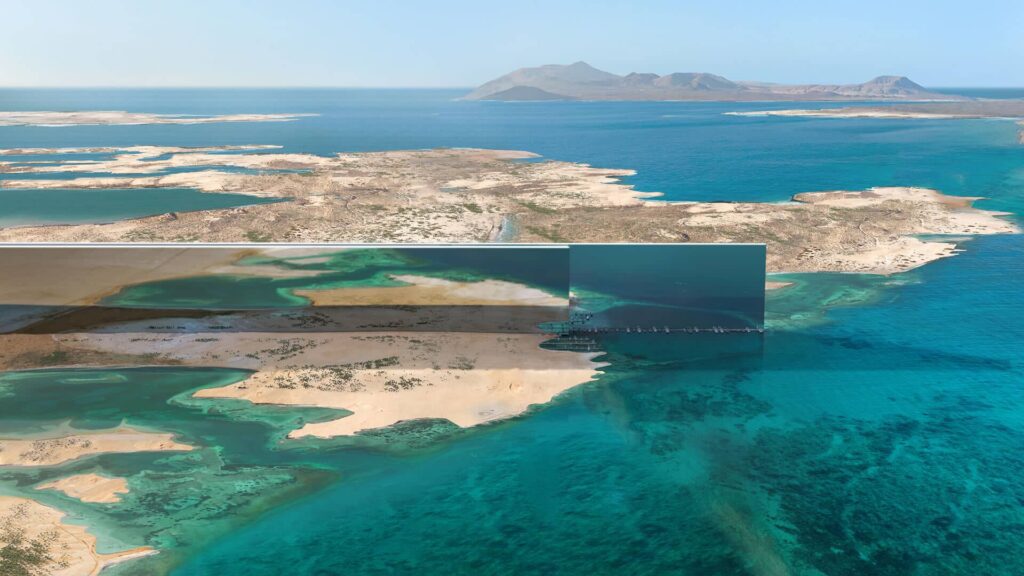
Mega structures, some arcologies are already there
Antarctic research bases are relatively self-sufficient communities, they must be given their location. The station McMurdo, for example, it houses around 3.000 researchers and support staff. Every year, however, it needs to be supplied with food and fuel which will then be self-managed.
Other mega-structures designed to be as autonomous and self-sufficient as possible? Aircraft carriers, nuclear submarines and oil platforms. They have everything they need to live and work, but for short periods: an aircraft carrier needs to be refueled every few weeks, a nuclear submarine can last up to four months.
But could we really build an arcology and live in it? The size of such a structure would require massive foundations to support its weight. This doesn't seem like a problem though. Almost anything can be built, within the limits of what is reasonable. Only the construction of the foundation will cost more.
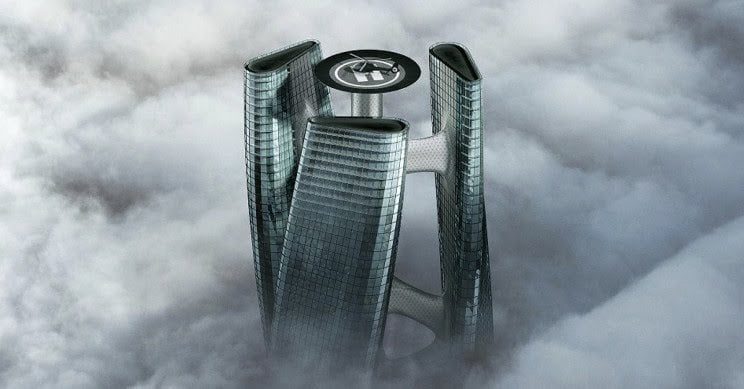
Withstand the wind
The biggest challenge caused by the height of a building is wind loading. Colossal towers like the Burj Khalifa of Dubai are likely to sway in strong winds. It is not a trivial matter: in 1940 the Tacoma Narrows Bridge of Washington collapsed due to strong winds that induced oscillations of ever higher frequency (rapid movements) on the bridge, so much so as to damage it.
The effects of vortices can be mitigated by designing megastructures to reduce the impact of wind, and by using a tuned mass damper (a device to reduce vibrations).
“One way to mitigate vortices is to change the shape of the building as it rises,” he says Adrian Smith, architect of many large skyscrapers and of Burj Khalifa itself.
If you don't change the shape of the building, the vortex has the opportunity to build on itself and create waves of motion. These synchronize with the structure of the building and cause a progressive collapse.
Therefore, rather than constructing an arcology as a vertical structure, it is easier to hypothesize “stepped” mega structures, such as the ancient Mesoamerican pyramids.
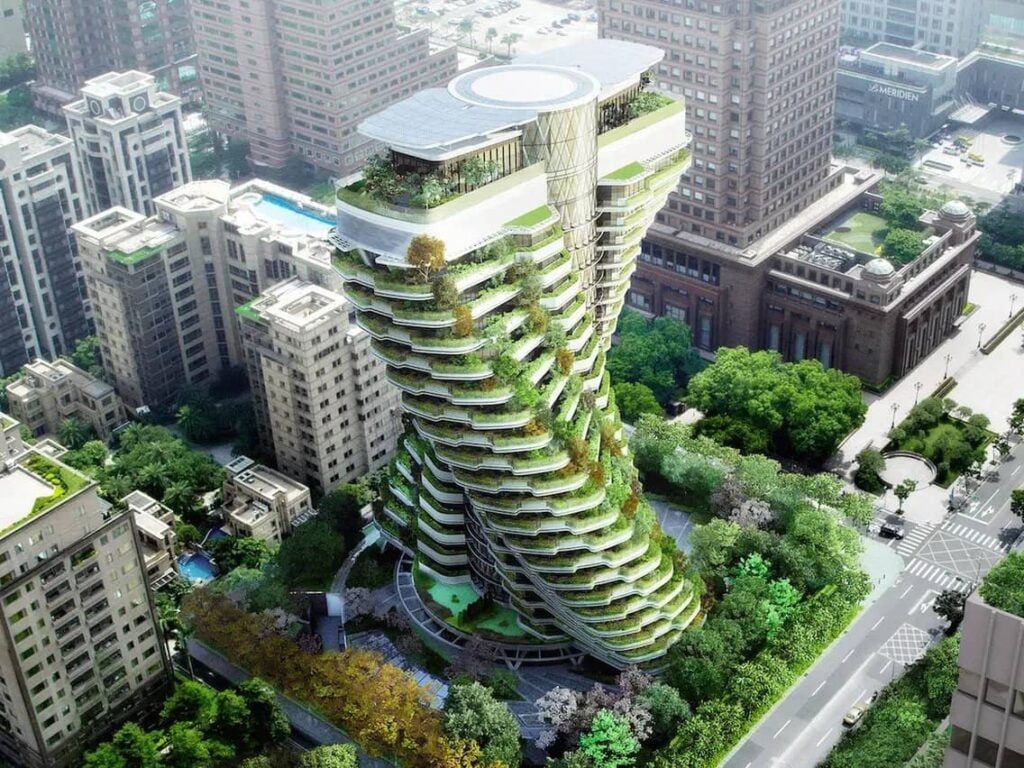
Generating energy
Another key challenge is energy generation. Technologies for renewable (such as solar panels and wind turbines) could be widely used, but it is unlikely that they alone will be able to give complete autonomy to these mega structures.
Obviously, energy generation and storage systems would be needed for times of shortage.
A hypothesis is given by SMR, small modular nuclear reactors that have some advantages over large reactors, for safety and waste production. However, as with all fission reactors, the treatment and storage of nuclear waste is still a challenge.
Alternatively, fusion reactors would be safer and provide cleaner forms of energy, but current designs are neither compact (one, Iter, should weigh 23.000 tons) or financially sustainable, as no one has yet produced more energy than they use.
Produce food
It is clear that conventional agriculture would not be viable in the relatively small spaces of mega structures.
You should resort to vertical hydroponic cultivation, which would also provide a natural form of air recycling. However, the necessary lighting would increase energy needs, a fact that must be taken into account.
Manage water
Here too, it's not very easy. An arcology that recycles water would use a series of water basins filtering or desalination, which is plausible. However, losses are inevitable in any such system.
La International Space Station (ISS) recycles approximately 17,3 liters of water (3,6 gallons) every day. All the water. Including urine and sweat, that is. And it still needs regular supplies of fresh water every few months.
Not everyone sees a future for these mega structures, and yet…
If you already imagine "city states" made up of a single mega building in this century, think again. Not only is it complicated, but there are even countries that don't even conceive of such solutions. Not even when we talk about "simple" skyscrapers of the future.
In 2021, for example, China banned the construction of new buildings taller than 500 meters and imposed severe restrictions on those taller than 250 meters. In the country, a vision based on tall skyscrapers seems to prevail, not very tall, but united together (as in the case of the "smart city" plans involving Shenzen).
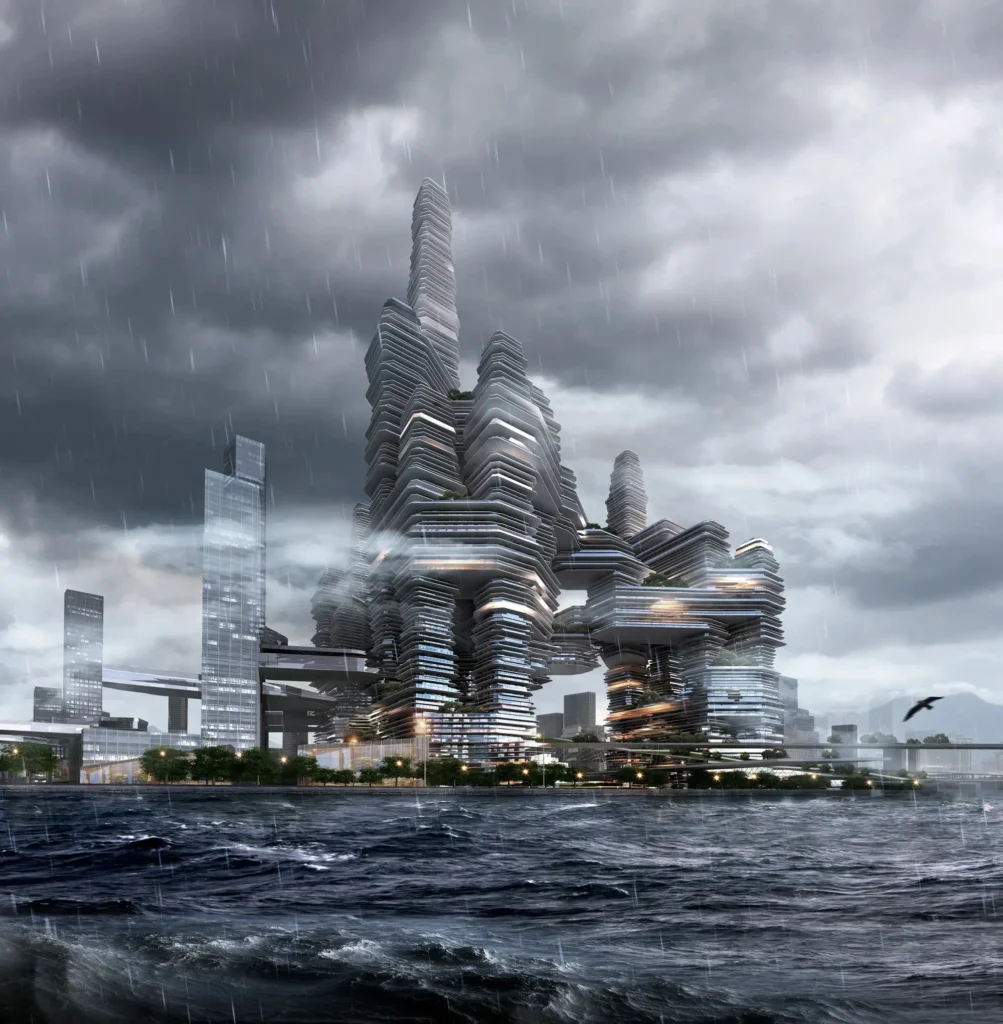
However, the problem remains
The continuous horizontal expansion of cities, through the concreting of new land, is not sustainable indefinitely. That's why you have to somehow climb upwards.
Vertical cities will sooner or later become a reality. Moving forward in time, if anything, I wonder if these operations will be sustainable for everyone. Will there be plans reserved only for the less well-off? As in science fiction films, will these mega-structures be divided by wealth?
Instead of free-standing tower blocks, the buildings could be interconnected with land bridges, creating green spaces between them. However, building higher and higher with a network of land bridges risks overshadowing the lower levels, making the higher levels increasingly desirable and thus leading to a structured hierarchical system.
Mega structures: conclusions
It is difficult to understand how arcologies can become economically viable in the near future.
While building an arcology is theoretically possible, at least from a structural perspective, it would require incredible inventive engineering to ensure autonomous energy generation, food production, and waste recovery.
And then living permanently inside a closed area would not be pleasant, unless an apocalyptic event made it essential.
From this point of view, I hope we won't see "dystopian" arcologies around. A bit of Solarpunk wouldn't hurt though: I'm an incurable optimist :)
